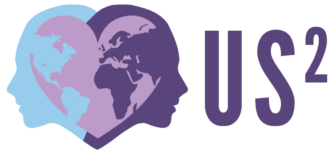As we continue to explore sizeism, it’s time to take a mirror and look inside ourselves. Right now, we invite you to explore the impact of sizeism on your thoughts, actions, and empathy. Ever wondered how sizeism influences your perceptions without you even knowing it? That’s what we’re addressing today. Implicit sizeism can subtly shape our beliefs, even when we’re unaware.
Empathy is our blueprint. We’re not just understanding others; it’s about walking alongside those facing size-based discrimination and genuinely seeking to understand their experiences, even if you can’t directly relate.
As we explore the opportunity to change, we must understand how sizeism has quietly affected our thoughts and actions. It may be a shadow we haven’t fully seen, but we have the opportunity, right now, to explore our inner selves, acknowledge our biases, and continue the transformational shift into a more inclusive world.
Unpacking Implicit Sizeism: Exploring Our Hidden Biases
Recognizing Implicit Sizeism
Before we can address sizeism within ourselves, we must first acknowledge its existence. We talked in this blog about the definition of sizeism, however, implicit sizeism refers to the biases we hold about body size and shape without even realizing it. It’s like an undercurrent in our thoughts, influencing our perceptions of others.
The Sneaky Bias
Implicit sizeism operates under the radar, making it challenging to identify in our own thinking. We may not even be aware of the judgments we make based on size. Have you ever assumed someone’s health based solely on their appearance? It’s a common scenario where implicit sizeism can manifest. Implicit sizeism can impact how we treat others, sometimes unintentionally causing harm or perpetuating stereotypes.
Stereotypes and Assumptions
Sizeism often manifests as stereotypes and assumptions about people based on their body size. These stereotypes can shape our interactions and influence our beliefs about individuals.
Judging the Book by Its Cover
We may unconsciously assume that larger individuals are lazy or lack self-discipline. These assumptions filter our perceptions of character. Reflect on a time when you made a snap judgment about someone’s habits or abilities solely because of their size. Maybe you assumed athletic ability based on someone’s height. It’s a common scenario where implicit sizeism can hide.
Shaping Our Language
Implicit sizeism can also affect the words we use. We might use phrases that unintentionally reinforce stereotypes, such as associating “thin” with “healthy” without considering the individual’s actual well-being. We may also avoid using words like “fat”, thinking they are insulting or rude.
Challenging Implicit Sizeism
Now that we’ve recognized implicit sizeism within ourselves, let’s explore the opportunity it presents. By shedding light on these biases, we can actively work to challenge and change them.
Awareness and Reflection
The first step is awareness. Recognize when implicit sizeism influences your thoughts and actions. Reflect on the judgments you make and why you make them. Try keeping a journal where you note instances when you catch yourself making assumptions about someone based on their size. A note on your phone works well, too! Writing things down is a great way to increase awareness.
Empathetic Self-Correction
When you identify implicit sizeism in the moment, practice self-correction. Challenge your assumptions and replace them with empathetic thoughts and actions. By unpacking implicit sizeism within ourselves, we open the door to greater empathy and positive change, not only in our own lives but also in society at large, and the lives of those we interact with.
Connecting with Privilege and Empathy: Fostering Understanding
Recognizing Privilege in Sizeism
Sizeism can intersect with privilege, influencing how we perceive ourselves and others. It’s vital to recognize our privilege and how it impacts our attitudes and behaviors.
Privilege Awareness
Privilege in sizeism can manifest as being closer to societal beauty standards or facing fewer instances of bias based on size. Reflect on how your own experiences may differ from those who don’t enjoy the same privileges. Have you ever been treated differently because of your size? If you’re feeling courageous, have you seen others treated unfairly due to their size?
Impact on Empathy
Understanding privilege is a critical step toward empathy. When we acknowledge our own advantages, we’re better equipped to empathize with those who face size-based discrimination.
Empathy Development
Empathy is the key to dismantling sizeism. By actively seeking to understand the experiences of others, we can develop greater empathy and support those who face this bias.
Empathetic Listening
Take the time to listen to the stories and experiences of those who have encountered size-based discrimination. Listen without judgment or interruption and strive to understand their perspective. Engage in conversations with individuals who have faced sizeism. Ask them about their experiences and challenges. Your willingness to listen can make a profound difference.
Shifting Our Perspective
Challenge your own biases and assumptions. Try to see the world from someone else’s viewpoint, particularly those who have faced size-related bias. This can lead to more empathetic actions.
Breaking the Silence
Now, let’s explore the opportunity that arises from connecting with privilege and empathy. By understanding and empathizing with others, we can actively challenge sizeism and promote inclusivity.
Open Conversations
Start conversations about sizeism with friends, family, and colleagues. Share what you’ve learned about privilege and empathy and encourage others to reflect on their own biases. Host a discussion group or awareness event focused on sizeism and invite people who have experienced sizeism to share their stories and expertise. These events can create a safe space for open dialogue and encourage others to connect with empathy.
Supporting Others
Be a source of support for those who face sizeism. Stand up against bias when you witness it, and offer empathy and understanding to those who need it most. By connecting with privilege and empathy, we not only become more aware of our own biases but also actively contribute to a more inclusive and compassionate world.
Taking Meaningful Action Against Sizeism: Making a Difference
Personal Accountability
Now that we’ve recognized implicit sizeism and connected it with privilege and empathy, it’s time to take meaningful action. A crucial first step is holding ourselves accountable for our thoughts, words, and actions related to sizeism.
Taking Ownership
Acknowledge when you slip into old habits of implicit sizeism and hold yourself accountable for these biases. When you catch yourself making a size-based assumption about someone, take a moment to correct that thought, replacing it with an empathetic perspective.
Continual Self-Reflection
Regularly reflect on your progress. Are you becoming more aware of your biases? Are you actively working to change them? If so, make sure you take the time to reward yourself for you improvement. If not, shake off the dust and try again!
Promoting Inclusivity
Creating Inclusive Spaces
Our actions have the power to promote inclusivity and challenge sizeism. Let’s explore how we can actively foster environments where everyone feels valued, regardless of their size. If you’re in a leadership position at work, ensure that your organization promotes inclusivity in terms of body size. Encourage diverse representation and challenge size-based discrimination.
Supporting Others
Be an ally to those who face sizeism. Stand up against bias when you witness it and offer support to those who may be struggling. Share what you’ve learned about sizeism with friends and family. Encourage them to join you on the journey towards a more inclusive society.
Supporting Change
As we take meaningful action, we have the opportunity to amplify the voices and efforts of organizations and movements dedicated to eradicating sizeism. Consider volunteering with or donating to organizations that work towards ending size-based discrimination. Your support can help them create meaningful change.
Advocacy
Be an advocate for sizeism awareness. Share educational resources, participate in campaigns, and use your platform to raise awareness about this issue. Join or organize events that promote sizeism awareness, such as workshops, seminars, or community discussions. These activities can bring people together to support the cause.
While advocacy is not the final step, it’s a great place to know you’re on the way to Metamorphustice™!
By taking meaningful action against sizeism, we not only transform ourselves but also contribute to a more inclusive world where everyone is valued for who they are, not how they look.
_____________________________
We’ve continued an eye-opening exploration into sizeism within ourselves with a goal to recognize our implicit biases, embrace empathy, and take action to challenge sizeism.
Now, as we wrap up this introspective adventure, remember that our commitment to change doesn’t end here. Life, as we move forward, is about continuing to be aware of our biases, fostering empathy, and creating a more inclusive world.
In fact, the next steps in our transformation invite you to take a look at the world around you for sizeism. Just as we’ve explored its impact within us, we’ll now turn our attention to the people we live with and society as a whole. Get ready to uncover the sizeism that may hide in plain sight.
The next blog in our Sizeism 101 series, “Unmasking The Sources of Implicit Sizeism,” is where we’ll tackle this new challenge head-on. Want to make sure you don’t miss out on our next posts and updates? Subscribe to our newsletter and join us in this transformation towards a more inclusive world. Together, we can create change, one step at a time!




